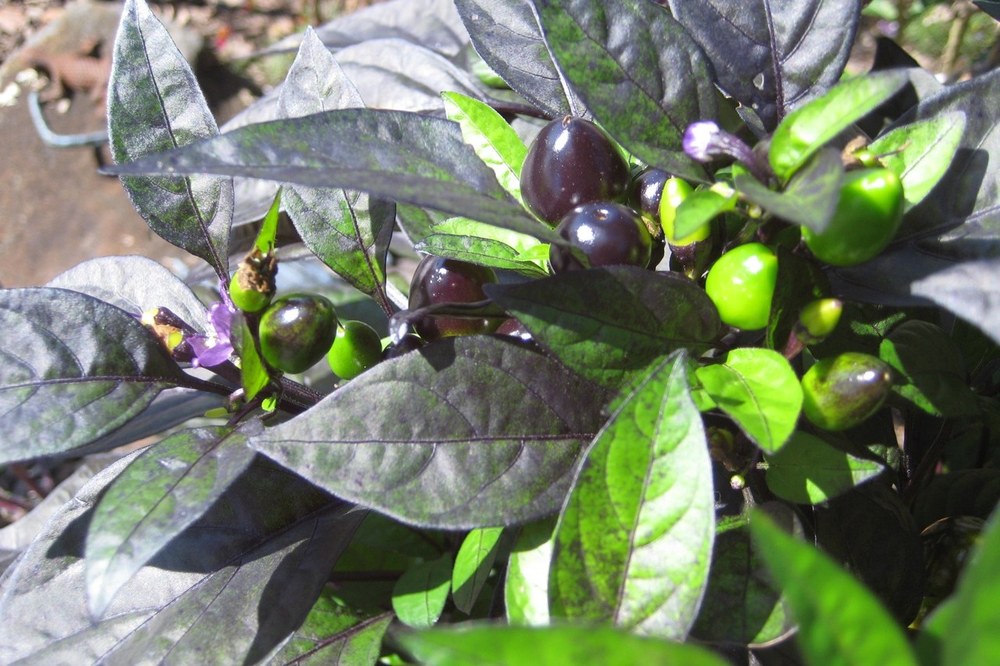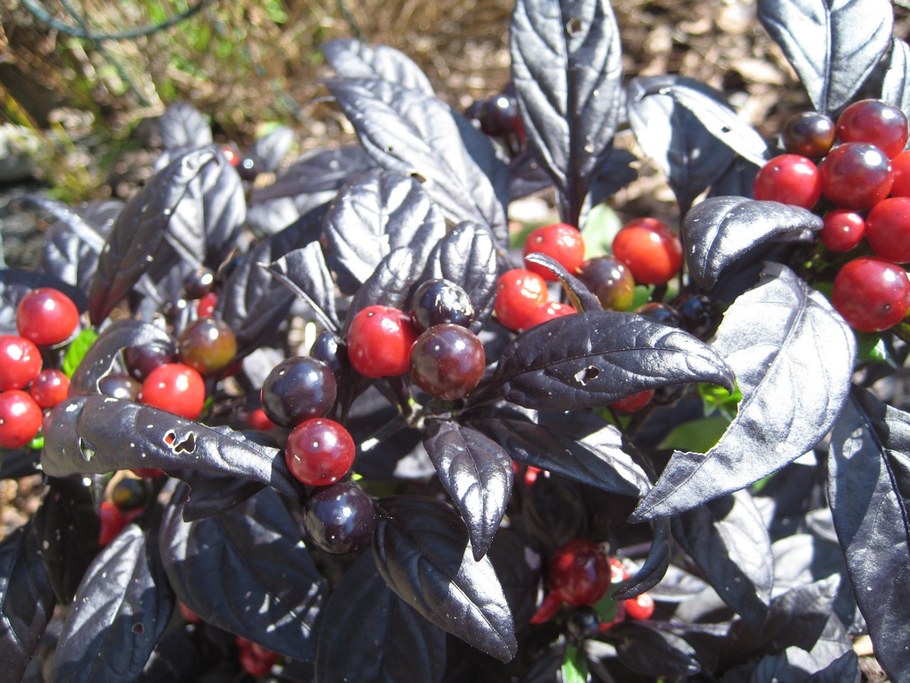Posted: October 18, 2021
Looking for something different to add to your mums and asters? Try ornamental peppers!

Pepper Black Olive, showing peppers turning from green to black. Photo by Connie Holland
Other than mums and asters, this time of the gardening season many perennials and annual plants have passed their peak and are "winding down." However, one of my favorite annuals comes into its own this time of year. It is the ornamental hot pepper. I grow several varieties that currently are in full fruit color. Even though they are edible, I do not grow them for culinary purposes because they are incredibly hot and not very good tasting unless one likes hot that makes you cry! Their range of colors and shapes are what make them attractive additions. The fruit comes in shades of red, purple, yellow, orange, black or white, and the peppers change colors as they ripen, so you may see several different colors on the same plant. Use them as bedding plants or grow in containers.
Ornamental peppers are very easy to grow and do best in full sun. Pests usually avoid them. The foliage is somewhat toxic so keep pets away. Ornamental peppers reseed readily if fully ripened peppers are allowed to dry on the plant and fall to the ground. Or one can collect the dried peppers and sow in pots in the spring. They can be directly sown in the ground, BUT wait until the soil warms because warm soil is needed for good germination.
My favorite pepper is Black Olive followed by Black Pearl. Both are aptly named because their fruit resembles their name both in pepper size and shape. The peppers' blooms most often are purple in color that is followed by lovely green fruit that slowly matures turning a very black-purple. Left to mature on the plant, the peppers eventually turn bright red. Plants can easily reach over three feet tall.

Pepper Black Pearl Photo by: C. Holland
One very interesting fact that I learned by growing several varieties at the same time is that the plants readily cross pollinate. When that happens, the fruit often is a shape that differs from the parents. The olive-shaped pepper can become perfectly round or develop a much elongated shape and often with a blunt tip. Others have become smaller with odd shapes.
One can expect fruit from mid-spring until fall frost. Bushy, glossy green foliage and colorful fruit that stand in upright clusters at the end of the stems combine to create an outstanding ornamental plant.
This is the time that a few fall tasks undertaken now will give you more enjoyment next season - collect desirable seed heads and store in a cool dry place. Get rid of flowering weeds BEFORE they set seed, divide overgrown perennials, plant spring flowering bulbs, root softwood cuttings, propagate desirable shrubs by burying a portion of a lower stem in the ground to encourage root growth for a new plant next season, sow seeds that need winter chilling for germination (e.g., poppies columbines, coneflowers, hollyhocks), buy discounted remaining perennials on sale to fill holes in beds (be sure to tend to them until established), clean up garden debris (especially tomatoes and potatoes) that can harbor diseases, bring in tender outside plants (first inspect or treat as appropriate for unwanted critters), and finally make sure your garden tools and equipment are ready for next season.
Connie Holland is a Penn State Master Gardener from Adams County. Penn State Cooperative Extension of Adams County is located at 670 Old Harrisburg Road, Suite 204, Gettysburg, phone 334-6271.
Monday videos: Visit us on Facebook at Penn State Master Gardeners in Adams County for our Master Gardeners' Monday Videos. Timely and relevant topics will be discussed on a weekly basis keeping readers up to date on current horticultural issues.

